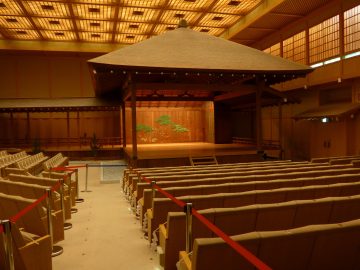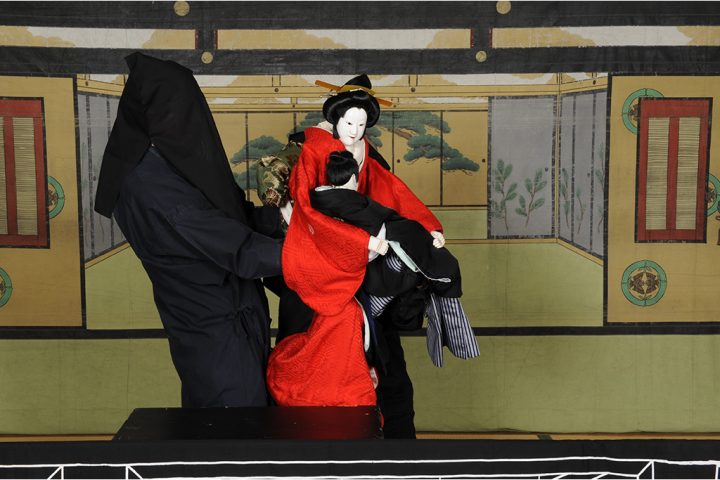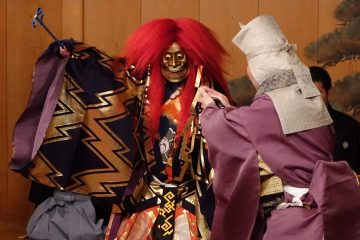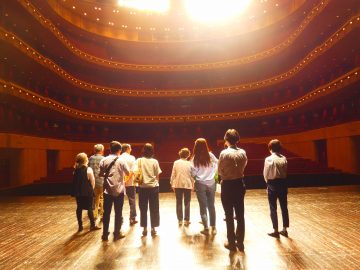Kanagawa/Japanese Traditional Culture Festival Special Feature "The 30th Jitsucho Festival/Special Event for the 800th Anniversary of Minamoto no Yoritomo's Death"
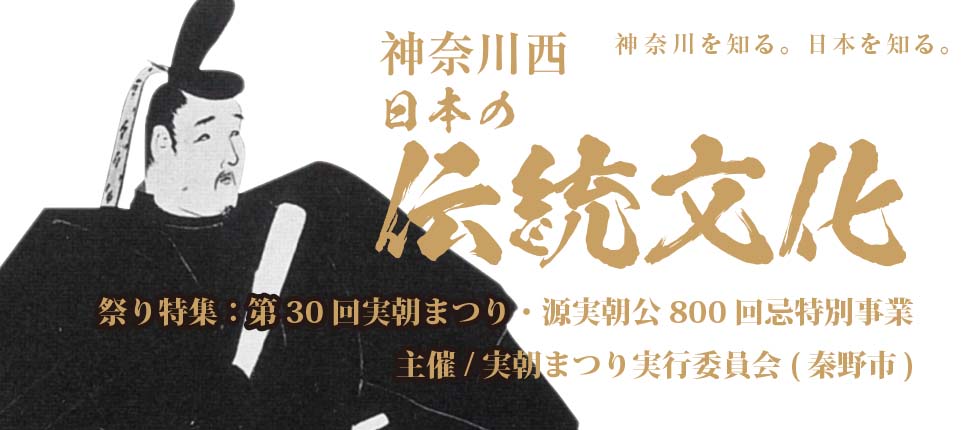
A ceremony to commemorate the soul of Minamoto no Sanetomo for the first time in 100 years will be held in conjunction with the 30th Sanetomo Festival.
-You can really feel the excitement surrounding the festival, with posters posted in all 72 stations on the Odakyu Line.
This year marks the 30th anniversary of the festival, and also the 800th anniversary of Sanetomo's death. The 800th anniversary is especially special. Buddhist ceremonies were held in this area, where the grave of Minamoto no Sanetomo is located, 100 years ago. Unfortunately, due to the Great Kanto Earthquake, all that remains to remind us of those days are the remains of the torii gates, and we have no way of knowing the details of the ceremonies or the feelings of the people who visited the area. However, we are preparing to make the festival ceremony of the Hadano East area, an area associated with Sanetomo, a memorable one that will remain in everyone's hearts.

-I heard that you set aside a considerable amount of time for preparations for this project.
It started in June 2016, so it's been about a year and a half. In other words, it started before the last Jitsucho Festival (laughs). I've been the chairman of the executive committee since the 28th festival, but this time, the period, the number of people involved, and the scale of the event are all different from previous ones. So, it was difficult at the beginning.
The Sanetomo Festival is a festival created by everyone in the eastern district. That's why various people from the district participate, from children to the elderly, various local organizations and experts. This year, there is also a special project for the 800th anniversary, and in addition to kindergarteners, elementary school students, and junior high school students, there are also high school students volunteering for the first time. There are also many organizations such as youth groups and women's groups, for a total of 36 organizations. In addition, there are 12 members of the former neighborhood association who back up the preparations and operations, and in addition, with the cooperation of the former neighborhood association president, there are more than 35 members who plan events, including the head priest of Kongoji Temple, which is associated with Sanetomo, and the principal of an elementary school. As the chairman, I propose plans, manage progress, and confirm and share contact information, so it's really hard (laughs).
-I heard that in addition to his duties as committee chairman, Takahashi also wrote the script for the picture-story show that is planned for the event.
That's right. In reality, four people are assigned to each section and create the story with a division of roles. Kamishibai is something that can be enjoyed immediately when you watch it, but when it comes to actually creating it, I feel that it is really difficult.

The story focuses on the whereabouts of Sanetomo's head, as the "Minomoto no Sanetomo no Mishirushi Tomb" is located in the eastern district. First, a brief historical fact: when Sanetomo was 27 years old, he was assassinated by his nephew Kugyo at Tsurugaoka Hachimangu Shrine. Kugyo took his head away, but was punished by Nagao Sadakage, a vassal of Miura Yoshimura. Then, Take Tsuneharu, a vassal of the Miura clan like Nagao Sadakage, retrieved Sanetomo's head and buried it at the current location of the tomb. The picture story is titled "The Whereabouts of Sanetomo's Head" and, while referring to the Sagami Fudoki, Azuma Kagami, and Gukansho, it follows the historical facts as much as possible, it also includes emotional topics such as Sanetomo's humanity and the feelings of his mother, Hojo Masako, at the loss of her beloved son. It took a lot of effort to create a story that is based on historical fact but can also be enjoyed by children.
However, we received cooperation from the descendants of Take Tsuneharu, who supervised the project, and the children were delighted with the first performance the other day, so we feel that we have made progress. On the day, we will also be handing out starch syrup, which is an "essential" part of Kamishibai, so we hope that many people will enjoy it.
The highlight will be the biwa performance telling the story of Sanetomo, and gagaku music inviting visitors into the romance of history.

-It seems that the main event will be even more substantial this time.
This is something you can't experience very often. It's a performance of "shinobue, biwa" and "gagaku."
For the Shinobue and Biwa, we plan to play "Aoba no Fue" on the Shinobue and "Biwa Narration" by Sanetomo on the Biwa. There may be many people, especially young people, who have never heard either performance before, but I think that their unique tone and narration will resonate with the hearts of Japanese people across generations.
We will also be inviting a well-known gagaku group. The performances at the Hibita Gagaku Association at Hibita Shrine in Isehara City, adjacent to Hadano City, are truly wonderful. They actively perform overseas and are known as a gagaku group with fans all over the world. There was a time when I was struggling to think of what to do for the main event. At that time, I happened to see their performance on TV, and I had an intuition that "this is it." I thought it would be a perfect event for the 800th anniversary special event.

-It seems like it will be a festival where you can feel the romance of history even more. By the way, I heard that original tenugui hand towels will be given away to the first visitors.
I just went to a meeting today to discuss the production, and it's in the final stages. This looks like it'll turn out well. The design includes the Sanetomo Festival logo title, a seated statue of Sanetomo, and a waka poem written by Sanetomo. On the day of the event, we will be inviting guests with ties to Kamakura, including the mayor of Kamakura, and as a thank-you gift, we plan to distribute commemorative sake cups with a Sanetomo design and have them enjoy sake in a masu cup.
The kenchinjiru soup served in a 4m-long pot and the many food stalls add to the excitement of the festival.
-This time, it seems there will be some fun twists to the "enjoyment of food," one of the attractions of the festival.
We will be serving Kenchinjiru for free in a huge pot called "Sennin-nabe." The pot has a diameter of an astounding 4 meters. It must be quite an impressive spectacle (laughs). Meanwhile, the recipe for Kenchinjiru is a traditional one. There is a temple in Kamakura called "Kenchoji," which is said to be the birthplace of Kenchinjiru, and we were taught the traditional way of making it there. Another feature of Sennin-nabe is that the contents of the pot can be divided. That's why this time, in addition to Kenchinjiru, we are also offering "Oshiruko" and "Onion Soup." I think people will enjoy the Oshiruko, and the onion soup is also good. It's one of my personal preferences, but it's really tasty after drinking alcohol (laughs).

The food stalls, run by local neighborhood associations, organizations, and residents in cooperation, will offer a wide variety of items, including ramen, soba, yakitori, corn, nori mochi, buns, and direct sales of vegetables, so we hope that people of all ages, from children to the elderly, will enjoy themselves to the fullest.
-Finally, please tell us about your enthusiasm for the Sanetomo Festival.
I am also the chairman of the east district residents' association, and I consider the Sanasa Festival to be a part of "town development." The Sanasa Festival is about contributing to a richer life in the district. That's why I want to make it a festival that not only the visitors, but everyone involved in the festival feels that it was "good" and "fun."
This is also a special year, marking the 800th anniversary of his death, and we have prepared many first-time events, so we hope that many people will come and visit. On the day, children dressed as young warriors will be waiting for you to visit. Please enjoy the Sanetomo Festival while experiencing the history of Sanetomo and the culture of Hadano and Higashitawara.

